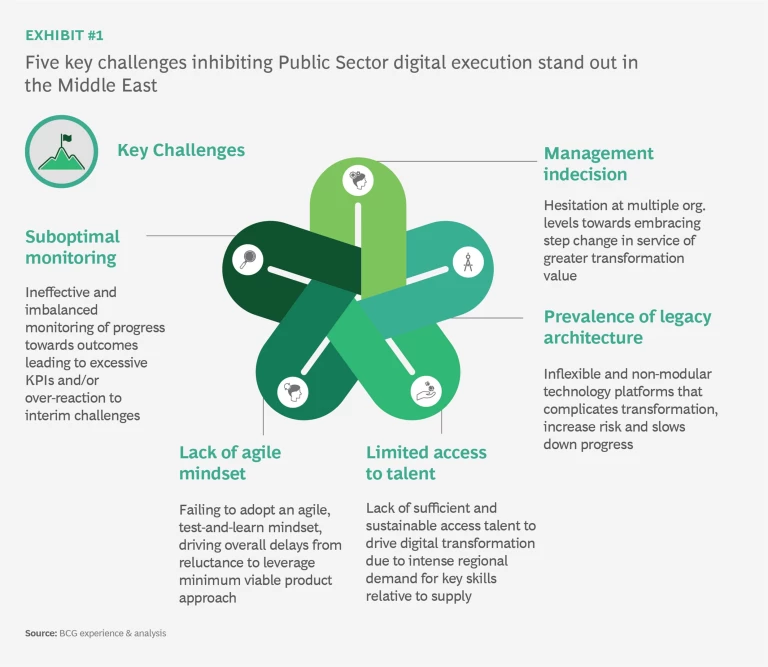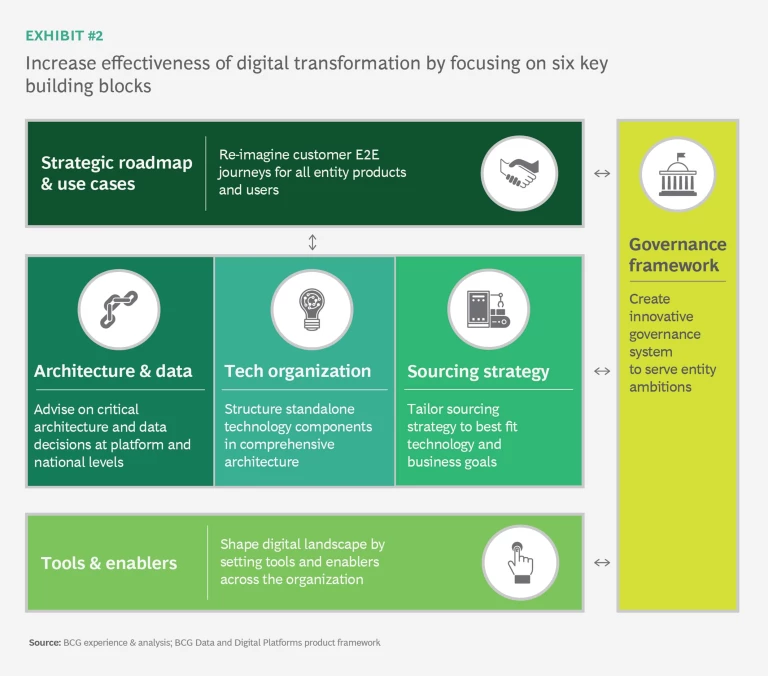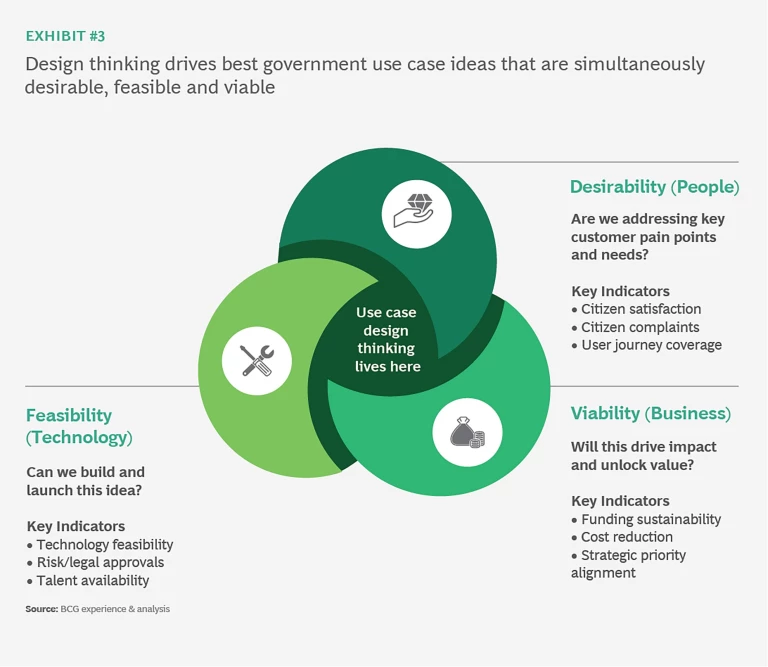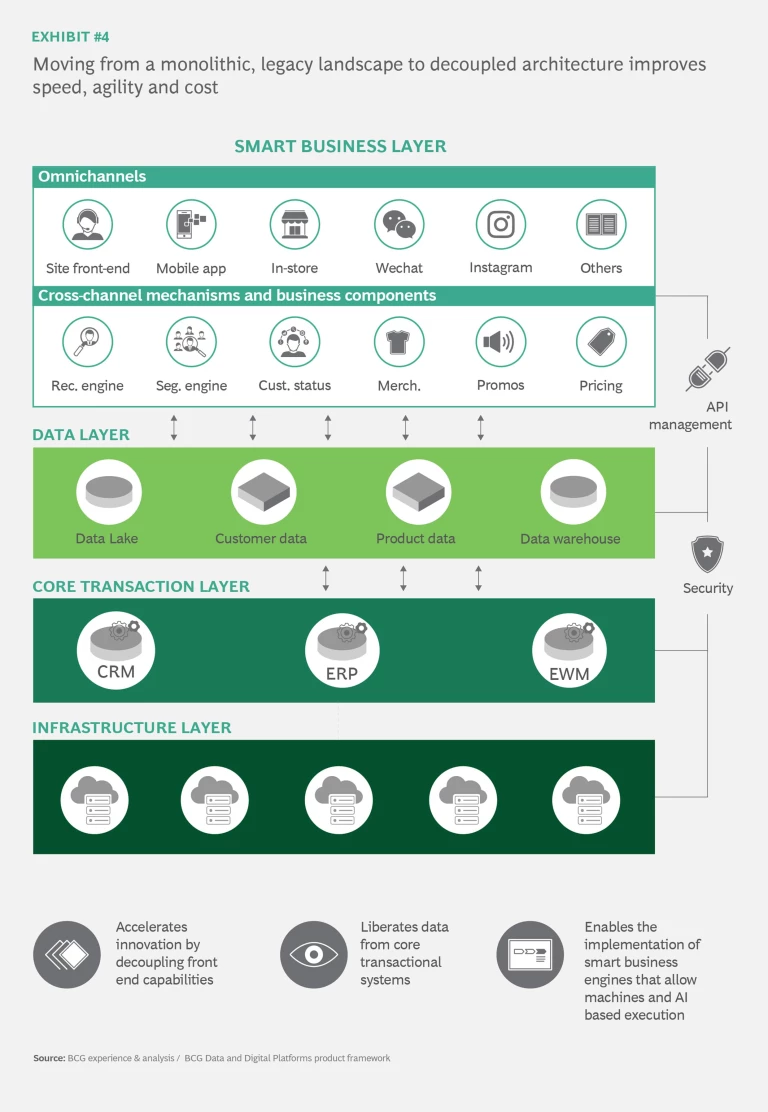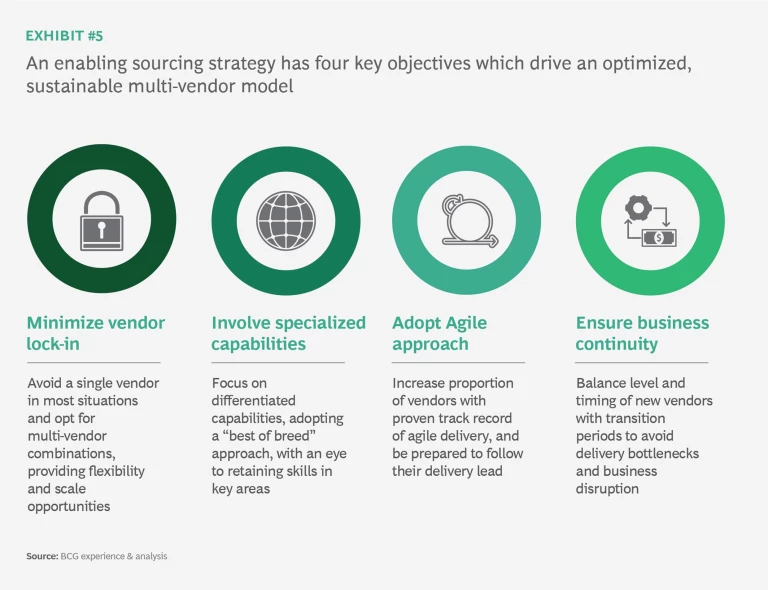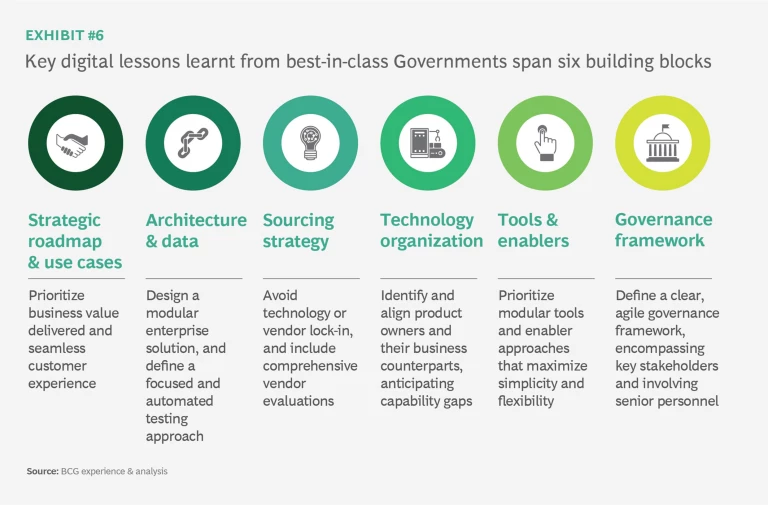Globally, recent government focus has been on COVID-19, climate and sustainability agendas, in addition to continuing overall citizen-centric transformation. In the Middle East, there has been clear emphasis on accelerating digital transformation, to meet ambitious national digital agendas and rising citizen expectations, and to rapidly address lingering digital government maturity gaps.
Three digital transformation trends are observed across the region:
- Re-structuring of key public sector authorities to account for digital focus and ensure the prioritization of government digital transformation efforts. For example, in 2021 the UAE government re-established the Telecommunications Regulatory Authority to the Telecommunications and Digital Government Regulatory Authority. The TDRA recently published its
Digital Transformation Enablers Report
highlighting the UAE government’s key achievements, including the
comprehensive Federal Network (FEDnet) cloud infrastructure
, the
UAE Pass digital ID
, and the
national customer relationship management system (NCRM)
.
- Centralized regulation of digital transformation efforts on a national level including a set of principles, policies, standards, and user guides to govern digital transformation efforts. The Kingdom of Saudi Arabia established a
Digital Government Authority (DGA)
in March 2021, following the launch the Kingdom’s national digital strategy. Aiming to increase the prevalence, efficiency, and integration of digital services, the DGA regulates digital government across government agencies. It is also responsible for preparing and overseeing the implementation of KSA’s national strategy for digital government. The DGA has released a regulatory framework for digital government, covering governance and compliance, comprehensive government platforms, beneficiary centralization, managing digital services and skills development, and
technology
.
- Harmonized digital government services targeting enhanced government-to-citizen experience. Recently Kuwait announced the launch of its Sahel mobile application , bringing together all key e-government services into one application. Sahel marks a strategic achievement in the government’s vision for Kuwait 2035, "A New Kuwait".
BCG’s latest Digital Strategy Roadmap global study reflects this positive progress in public sector organizations. Approximately 80% of those surveyed said that digital transformation is even more urgent in light of recent priority topics and upheavals. However, the survey also revealed that governments have considerable work left to do. Only 20% of public sector transformations succeed in meeting their goals, compared to the cross-industry private sector average of 30%. Broadly, governments have been quite successful in setting up their overall digital strategies and transformation programs. The key focus area now is to improve execution. This is where the real impact to citizens and private sector beneficiaries can be realized, increasing satisfaction convenience, and efficiency.
Challenges to Public Sector digital execution in the Middle East
BCG’s extensive public sector digital experience in the Middle East finds that governments confront five common execution challenges, related to management hesitation, legacy technology architecture, a lack of digital talent, failure to adopt an agile mindset, and ineffective monitoring of progress (Exhibit 1).
Hesitation of middle-management towards the transformation. BCG’s survey found that 82% of the most digitally mature organizations had high levels of CEO engagement (“high levels” defined as quarterly or more reviews). This underlines one key success factor, which is business / senior management buy-in for digital transformations, which are by nature multidisciplinary rather than isolated technical projects. Senior management buy-in ensures cross-cutting alignment in organizations to overcome roadblocks and enable the overall transformation. In the Middle East, however, there is often hesitation to embrace change in service of the greater transformation, and a desire to preserve power within departments. Culture attributes play a role in explaining how people respond to change – Middle Eastern firms are particularly characterized by a strong degree of stability. An emphasis on safety is prevalent in the region, as expressed in the prioritization of preparedness, business continuity and a significant focus on authority.
Legacy technology architectures which are inflexible to change. Common challenges include complex legacy architecture with limited documentation, vendor lock-ins for specific software, custom-developed solutions not compatible with off the shelf modules, overall siloed architecture, and limited overarching standards and guidelines. Horizontal, four-layered data and digital platforms leveraging off the shelf products, however, can reduce cost by up to 50% compared to legacy technology.
Lack of specialized talent and overall organizational capability to drive digital transformation. On project cases, senior executives and HR specialists repeatedly share their difficulties in addressing the digital talent gap, even in the young and digitally native population. This is a global challenge; Digital / IT executives cite talent shortage as by far the most significant barrier in transformations, with 64% of responses vs. 29% for implementation cost. But it is even more pronounced in Middle East due to the intense demand relative to supply, and sheer scale of regional governments’ ambitions. The commonly used practice of outsourcing is not a viable wholesale solution, as core skills in key areas (e.g. enterprise architects, cybersecurity specialists, analytics / data scientists) are needed in-house for long-term impact.
Failing to adopt an agile, test-and learn mindset. Globally, BCG’s research finds that 83% of unsuccessful transformations had leadership lacking an agile mindset, while successful transformations leveraged agile in 67% of the cases. We see this in Middle East as well. Change leaders’ reluctance to test with minimum viable products causes delays, as they cycle through multiple iterations to achieve the “perfect prototype”. A fail-fast-learn approach, quick decision making, learning by doing and perseverance to face challenges all run counter to the desire for stability .
Ineffective monitoring of progress towards outcomes. With the introduction of large-scale digitalization strategies has come a proliferation of strategic and operational KPIs to monitor progress. In some cases, this has been counterproductive. Excessive – and often conflicting – KPIs and targets complicate decision making. They exhaust management bandwidth with over-focus on complex and granular processes or data-capture, rather than overall impact and ability to support informed decisions.
Six Building Blocks for effective digital execution
Distilling experience and insights from many client projects, BCG has developed a framework for increasing the effectiveness of digital transformation project execution. There are six key building blocks which work hand-in-hand to secure the success of digital projects (Exhibit 2).
Strategic roadmap and use cases
By adding, respectively, a level of practical detail and intended real-world application, these create the “bridge” between the overall strategy and implementation/execution. Having a pragmatic, correctly prioritized, citizen-centered roadmap will help focus management efforts and resources. It will also highlight a set of most effective KPIs and milestones to track. The clarity and transparency that a strategic roadmap can offer also make it easier for senior and middle-management to buy in, reducing hesitancy. Review the strategic roadmap frequently, updating it as new information is received and implementation progresses.
We recommend using design thinking methods to prioritize the right use cases for delivery. The aim is to find the sweet spot at the intersection of what is desirable to citizens, feasible for implementation, and viable from a commercial perspective (Exhibit 3).
Architecture and data
Technology and data architecture, with their underlying solutions and subsequent infrastructure, must be able to support the roadmap. The key shift here is from monolithic to modular architecture (Exhibit 4). This accelerates innovation by decoupling front end capabilities, liberates data from core transactional systems, and enables implementation of the smart business engines needed for AI and machine learning.
This shift involves several distinct steps: moving toward a data-centric IT architecture; modularizing and decoupling major IT applications; and developing cloud-native applications supported by the DevOps toolchain. In BCG’s survey of public sector organizations, 100% of successful transformations involved a flexible, modular, interoperable data and digital platforms. Among those that we not successful, 86% reported that they had underestimated changes needed on the technology platform, and 72% had underestimated the IT investment needed for the transformation.
Technology organization
Governments driving successful digital agendas don’t leave their technology organization unchanged – they optimize it to support successful delivery of the digital programs. Building this organization-level capability means establishing cross-functional product / service teams comprising both “business / entity” and technology employees. Likewise, when appropriate, these teams should include both IT vendors and “in-house” end user organization representatives to ensure long term impact. The key point is improving collaboration and efficiency around what matters to the citizen or customer. It also means empowering a single product / service owner to be accountable for delivery and citizen experience. More broadly, optimization calls for the organization to embrace an agile mindset and related working practices.
Sourcing strategy
As noted above, challenges related to organizational capability and individual talent are intertwined. The technology organization building block addresses the former. This one is a step toward solving the latter. As governments face demands to deliver at scale, and fast, they must form partnerships with specialist external vendors who can provide needed capabilities and know-how to at least partially mitigate the lack of talent. However, it is important to source these capabilities through vendors and partners wisely. Key principles for sourcing vendors (Exhibit 5) include:
- Minimize vendor lock-in – avoid a single vendor in most situations and opt for multi-vendor combinations, providing flexibility and scale opportunities
- Involve specialized capabilities – focus on differentiated capabilities, adopting a “best of breed” approach, with an eye to retaining skills in key areas
- Adopt agile approach – increase proportion of vendors with a proven track record of agile delivery, and be prepared to follow their delivery lead
- Ensure business continuity – balance level and timing of new vendors with transition periods to avoid delivery bottlenecks and business disruption
Tools and enablers
Governments should consider the optimal suites of tools (e.g. delivering higher data security than private sector companies require) that will support their overall digital transformation efforts. This is particularly important when evolving from digital project management to a product management approach for delivery of key platforms, with the latter more directly supporting agile processes and rapid delivery. Another key consideration for governments is the need for shared solutions and interoperability among tools and enablers. As illustrated in the UAE Fednet tool and KSA DGA mandate examples above, government digital data must be able to flow easily across agencies and platforms, which is essential to citizen satisfaction with digital services. Interoperability helps to ensure the collaboration needed across government entities supporting the transformation.
Governance framework
Setting up the right governance mechanisms and forums ensures the digital transformation is correctly monitored, allowing for more agile decision making and timely course-correction. As well as addressing the previously noted challenge with ineffective monitoring and proliferating KPIs, a strong governance framework ensures appropriate consultation, decision-making responsibility, and execution accountability, without sacrificing speed. Digital transformation in government is more complex than in business. Leaders must define roles and boundaries on a broad and deep topic like digital (which includes e.g. data, AI, infrastructure), requiring close coordination with the private sector, while also balancing diverse needs, responsibilities and perspectives across myriad government entities, businesses and citizens.
Lessons Learnt: a practical case example
We compiled the following practical lessons, based on multiple public sector engagements in the Middle East (Exhibit 6):
Strategic roadmap and use cases.
Place business, not technology first. Ensure that the technology delivers real business value – there is no point in having tech solutions for technology’s sake. Maintain an end-to-end user journey perspective when considering platform features, because only a seamless experience maximizes customer satisfaction. Dedicate significant effort to data ownership, governance, and taxonomy since these are essential enablers.
Architecture and data.
Design a modular enterprise solution architecture that reduces complexity and provides the flexibility needed to accommodate future developments. Define a focused testing approach at the very start of the implementation. Encourage automation for test and deployment processes (DevOps) to ensure thorough product testing.
Sourcing strategy.
Define sourcing strategy to avoid technology or vendor lock-in. Allocate enough time to select specialized technology and vendors, avoiding extensive time spent to fix issues later in the project. Perform comprehensive vendor evaluations that include focused proof of concepts supporting the final vendor selection. Target a 50%+ response rate by ensuring a diverse initial shortlist of vendors.
Technology organization.
Clearly identify product owners and their business counterparts early on to align on requirements, ensuring that the end product is useful. Anticipate delivery capabilities gaps; properly plan to educate and train key stakeholders.
Tools and enablers.
Utilize modular container technology to simplify deployments and maximize flexibility. Ensure interoperability across tools and enablers.
Governance framework.
Develop a clear governance and sourcing model with a stakeholder mapping. Insist on following an agile approach – e.g. demos at the end of every sprint for developed features, sprint reviews etc. Involve senior personnel in vendor meetings and define clear decision making.
The Focus Now Shifts to Digital Implementation and Scale-Up
Middle Eastern governments have made great strides along their digital transformation paths in recent years, setting strategies and launching landmark products and services. As their national agendas and related strategies evolve, governments will increasingly need to focus on widespread digital implementation and scale-up.
Learning from others’ experiences – particularly what works and what to avoid – will be key to ensuring success. Start with a pragmatic, correctly prioritized, citizen-centered roadmap to focus effort and resources. Embrace modular, not monolithic, technology and data architecture. Optimize your technology organization, adopting an agile mindset and work practices. Create a sourcing strategy that minimizes lock-ins and maximizes your ability to access the right technology, capabilities, and support. Ensure tools and enablers are interoperable. Establish a strong and appropriately flexible governance framework.
With many of the foundational organizational structures and programs in place, now is the time for governments in the Middle East to sharpen their digital transformation implementation. Strengthening implementation capability will help deliver both the desired business value and more satisfied citizens.

